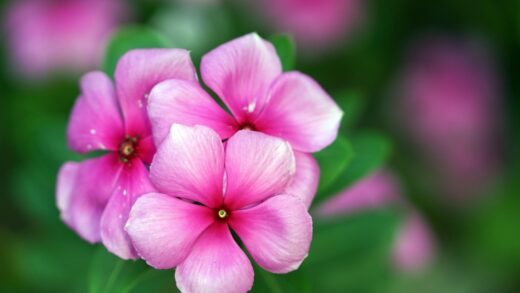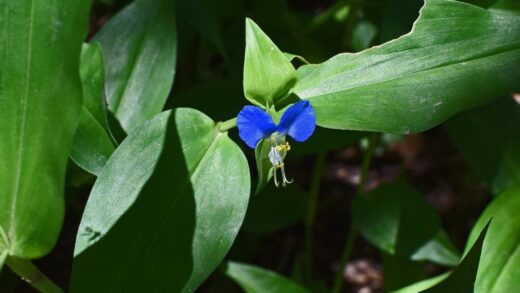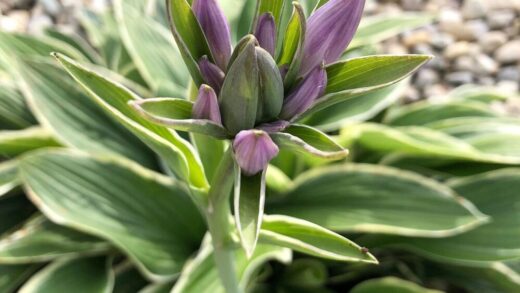The passion flower, with its intricate and exotic blooms, is a captivating addition to any garden or indoor collection. Achieving success with this stunning vine requires a nuanced understanding of its fundamental needs, moving beyond basic care to a more holistic cultivation approach. It is not merely a plant to be watered and fed, but a living organism with specific environmental preferences that must be met to witness its full, glorious potential. Mastering the art of passion flower care involves a delicate balance of providing the right amount of light, water, and nutrients, while also being vigilant for signs of stress or disease. This comprehensive guide will delve into the intricacies of its cultivation, offering expert advice to ensure your passion flower not only survives but thrives, producing a profusion of its uniquely structured and beautiful flowers year after year.
Proper care begins with a foundational understanding of the plant’s native habitat, which is primarily the tropical and subtropical regions of the Americas. This context is crucial as it informs every aspect of its cultivation, from soil composition to humidity levels. These plants are accustomed to bright, filtered light, consistent moisture, and a well-draining substrate that mimics the forest floor. Replicating these conditions is the primary goal for any dedicated grower. Failure to do so can lead to a host of problems, including yellowing leaves, a lack of flowering, and increased susceptibility to pests and diseases, all of which can be avoided with careful attention to detail.
Furthermore, the specific species or cultivar of Passiflora you are growing will have a significant impact on its precise care requirements. With over 500 species in the genus, there is considerable variation in terms of hardiness, size, and flowering habits. For instance, species like Passiflora caerulea are relatively hardy and can tolerate cooler temperatures, while others, such as Passiflora quadrangularis, demand a consistently warm and humid environment to flourish. Therefore, it is essential to identify your particular variety to tailor your care regimen accordingly, a step that is often overlooked but is critical for long-term success.
Finally, successful cultivation is an ongoing process of observation and adjustment, not a rigid set of rules. Your passion flower will communicate its needs through the condition of its leaves, the vigor of its growth, and the abundance of its blooms. A discerning gardener learns to interpret these signals, adjusting watering schedules, fertilizer applications, and light exposure as needed. This responsive and attentive approach is what truly separates a novice from an expert and is the key to unlocking the breathtaking beauty of these extraordinary plants. It is a rewarding journey that deepens one’s connection to the plant and the natural world.
Understanding the growth cycle
The life cycle of the passion flower is a dynamic process characterized by distinct phases of growth, each with its own specific care requirements. Understanding this cycle is paramount for providing the right support at the right time, thereby maximizing the plant’s health and flowering potential. The cycle typically begins with a period of active vegetative growth in the spring, followed by a flowering phase in the summer, and a transition into dormancy or reduced growth as autumn and winter approach. Each of these stages demands a different approach to watering, feeding, and pruning, and aligning your care routine with this natural rhythm is essential for sustainable cultivation.
More articles on this topic
During the spring, as temperatures rise and daylight hours lengthen, the passion flower enters a phase of vigorous vegetative growth. This is when the plant focuses its energy on producing new stems, leaves, and tendrils, establishing a strong framework for the upcoming flowering season. At this time, it is crucial to provide ample nitrogen-rich fertilizer to support this rapid development. Consistent moisture is also vital, as the expanding foliage requires a significant amount of water. This is also the ideal time to provide a sturdy trellis or support structure for the climbing vines to ascend, guiding their growth and ensuring good air circulation.
The transition into summer marks the beginning of the much-anticipated flowering period. As the plant matures, its hormonal balance shifts, triggering the development of flower buds. To encourage prolific blooming, it is advisable to switch to a fertilizer with a higher phosphorus and potassium content, which promotes flower production rather than vegetative growth. Adequate sunlight becomes even more critical during this phase, as it provides the energy needed for the complex process of flowering. Regular monitoring for pests, which are often more active in warmer weather, is also essential to protect the developing blooms.
As late summer and autumn arrive, the passion flower’s growth naturally begins to slow down. The intensity of the light decreases, and temperatures begin to drop, signaling the plant to conserve energy. During this period, you should gradually reduce the frequency of watering and cease fertilizer applications altogether. This allows the plant to harden off its new growth in preparation for the cooler months ahead. For tender species grown in cooler climates, this is the time to start planning for overwintering, whether that involves moving the plant indoors or providing protective coverings outdoors.
The importance of the right location
Selecting the optimal location for your passion flower is one of the most critical decisions you will make in its cultivation journey, as it directly influences the plant’s overall health and ability to flower. The ideal site must satisfy the plant’s specific requirements for sunlight, shelter, and space. Passion flowers are, by nature, sun-loving plants that thrive in locations receiving at least six hours of direct sunlight per day. Insufficient light is one of the most common reasons for a lack of blooms, so a south-facing or west-facing position is often ideal. However, in intensely hot climates, some protection from the harsh afternoon sun may be necessary to prevent leaf scorch.
More articles on this topic
Beyond sunlight, protection from strong winds is another key consideration when choosing a location. The long, climbing vines and large leaves of the passion flower can be easily damaged by powerful gusts, which can lead to tearing, desiccation, and overall stress for the plant. Planting it against a sheltered wall, a sturdy fence, or within a protected courtyard can provide the necessary buffer against harsh weather conditions. This shelter not only prevents physical damage but also helps to create a slightly warmer microclimate, which can be particularly beneficial for less hardy species in temperate regions.
The physical space and support structure available are also of paramount importance. Passion flowers are vigorous climbers, with some species capable of reaching impressive heights and spreads in a single growing season. It is essential to provide them with a robust trellis, arbor, or other support system that can accommodate their growth. Ensure there is ample vertical and horizontal space for the vine to expand without becoming overcrowded, which can impede air circulation and increase the risk of fungal diseases. Planning for its mature size from the outset will prevent issues later on.
Finally, consider the soil conditions of the chosen location. Passion flowers require well-draining soil that is rich in organic matter. Poorly drained, waterlogged soil is a significant threat, as it can quickly lead to root rot, a condition that is often fatal. Before planting, it is wise to amend the soil with compost, aged manure, or other organic materials to improve its structure and fertility. If you are growing your passion flower in a container, selecting a high-quality potting mix specifically formulated for flowering vines is a crucial step that should not be overlooked for a healthy root system.
Watering and humidity requirements
Proper watering and maintaining adequate humidity levels are fundamental to the health and vitality of your passion flower. These plants originate from environments where moisture is consistently available, and they are not adapted to withstand prolonged periods of drought. The key to successful watering is to maintain a balance, keeping the soil consistently moist but never waterlogged. The frequency of watering will depend on several factors, including the size of the plant, the type of container, the ambient temperature, and the time of year. During the active growing season of spring and summer, you will likely need to water more frequently, possibly several times a week.
A reliable method for determining when to water is to check the top inch or two of the soil. If this layer feels dry to the touch, it is time to provide a thorough watering. When you do water, do so deeply, allowing the water to penetrate the entire root ball until it begins to drain from the bottom of the pot. This deep watering encourages the roots to grow downwards, creating a more robust and resilient root system. Shallow, frequent watering, on the other hand, can lead to a weak, shallow root system that is more susceptible to drying out and stress.
While consistent soil moisture is crucial, the quality of the water can also play a role in the plant’s health. Passion flowers can be sensitive to the high mineral content, particularly chlorine and fluoride, often found in tap water. If possible, using rainwater or distilled water is an excellent alternative. If you must use tap water, allowing it to sit out for 24 hours before use can help some of the chlorine to dissipate. This small step can prevent the gradual build-up of salts in the soil, which can negatively impact nutrient uptake over time.
In addition to watering, providing adequate humidity is especially important for these tropical and subtropical natives, particularly when grown indoors. Dry indoor air, common in heated homes during the winter, can cause stress, leading to brown leaf tips and an increased vulnerability to pests like spider mites. To increase humidity, you can place the pot on a tray filled with pebbles and water, ensuring the bottom of the pot is not submerged. Grouping plants together or using a room humidifier can also be highly effective methods for creating a more favorable, humid microclimate that mimics their natural habitat.
Nutritional needs and feeding schedule
Meeting the nutritional needs of your passion flower is essential for promoting vigorous growth and ensuring a spectacular display of its complex flowers. These plants are relatively heavy feeders, especially during their active growing season in the spring and summer. Providing a balanced and consistent supply of nutrients will fuel the development of healthy foliage and an abundance of blooms. The ideal fertilizer for a passion flower is one that is well-balanced but slightly higher in phosphorus and potassium, as these elements are crucial for flower and fruit development. An excess of nitrogen, on the other hand, will often result in lush, green foliage at the expense of flowers.
The feeding schedule should be closely aligned with the plant’s natural growth cycle. Begin fertilizing in the early spring as new growth emerges, and continue on a regular basis throughout the summer months. A common recommendation is to apply a balanced, water-soluble fertilizer every two to four weeks. Alternatively, you can incorporate a slow-release granular fertilizer into the soil at the beginning of the growing season, which will provide a steady supply of nutrients over several months. Always follow the manufacturer’s instructions for application rates to avoid over-fertilizing, which can burn the roots and damage the plant.
It is also beneficial to supplement regular feedings with organic matter. Incorporating compost or well-rotted manure into the soil at the time of planting provides a rich source of micronutrients and improves the overall soil structure. You can also apply a top dressing of compost around the base of the plant each spring. This not only adds nutrients but also helps to retain moisture in the soil and suppress weeds. Organic amendments work in harmony with the soil’s ecosystem, creating a healthier environment for the plant’s roots to thrive.
As autumn approaches and the plant’s growth begins to slow, it is important to taper off and eventually stop fertilizing. Continuing to feed the plant into the fall and winter can encourage new, tender growth that is highly susceptible to damage from cold temperatures. This cessation of feeding allows the plant to enter a period of rest or dormancy, conserving its energy for the next growing season. Resuming the feeding schedule in the following spring will signal the plant to begin its growth cycle once again. This careful management of nutrients is a hallmark of expert cultivation.
Pruning and training for health and shape
Pruning and training are vital components of passion flower care, serving not only to maintain the plant’s size and shape but also to promote its overall health and enhance its flowering potential. Without regular pruning, these vigorous vines can quickly become a tangled, overgrown mass, which can reduce air circulation and make the plant more susceptible to pests and diseases. A strategic pruning approach encourages the development of new growth, and it is on this new growth that most Passiflora species produce their flowers. Therefore, proper pruning is directly linked to a more floriferous display.
The primary pruning session should typically take place in the late winter or early spring, just before the new growth begins. This is the time to remove any dead, damaged, or weak stems, as well as to reduce the overall size of the plant. You can cut back the main stems by up to one-third of their length, which will stimulate the plant to produce strong new shoots from the base and along the remaining framework. This hard pruning rejuvenates the vine and ensures that its energy is directed towards producing healthy, flower-bearing growth for the upcoming season.
In addition to the main annual prune, light trimming and training can be carried out throughout the growing season. This involves selectively removing any tangled or wayward stems to maintain the desired shape and prevent overcrowding. It is also an opportunity to train the new, flexible shoots onto their support structure, such as a trellis or arbor. Gently weaving the stems through the support or tying them in place with soft plant ties will help to create an attractive and well-structured display, ensuring that all parts of the plant receive adequate sunlight and air.
When making any pruning cuts, it is essential to use clean, sharp tools, such as secateurs or pruning shears. This will ensure a clean cut that heals quickly, reducing the risk of infection from fungal or bacterial pathogens. Always make your cuts just above a leaf node, as this is where new growth will emerge. By following these pruning and training principles, you can effectively manage your passion flower, keeping it healthy, productive, and beautifully shaped for many years of enjoyment in your garden.


















